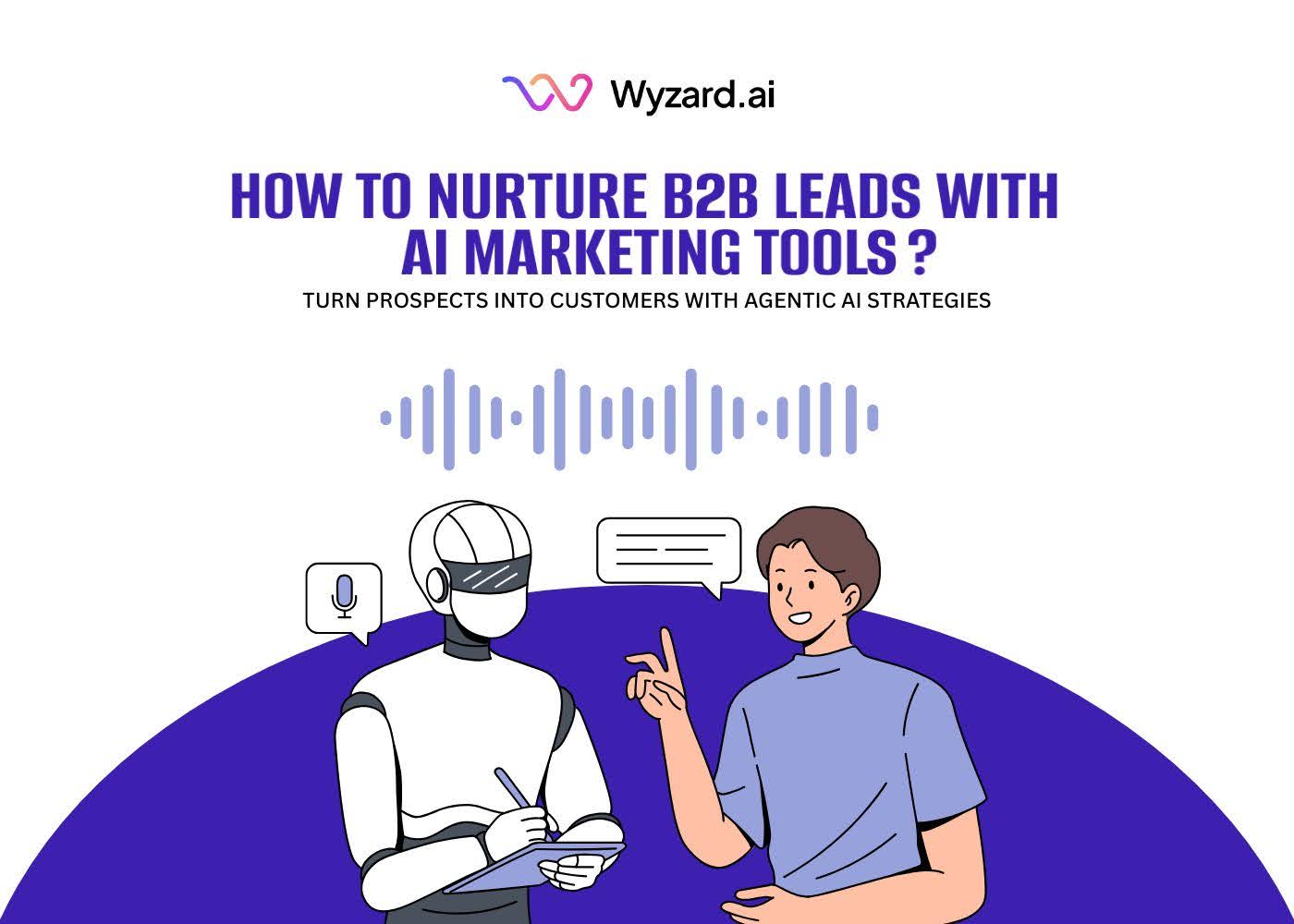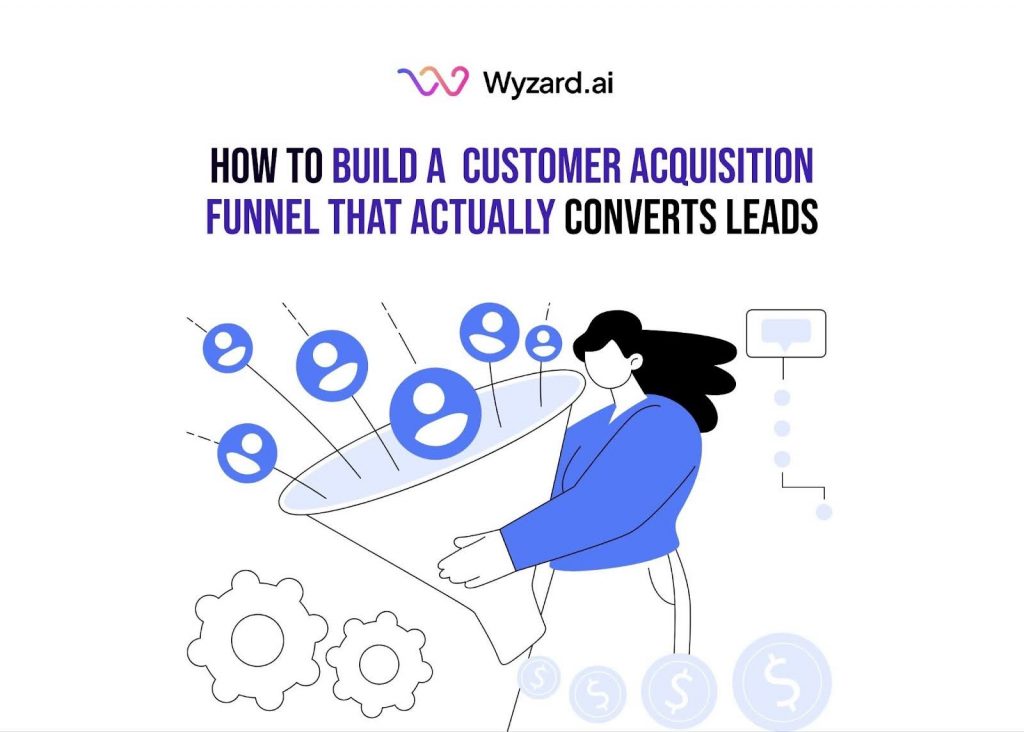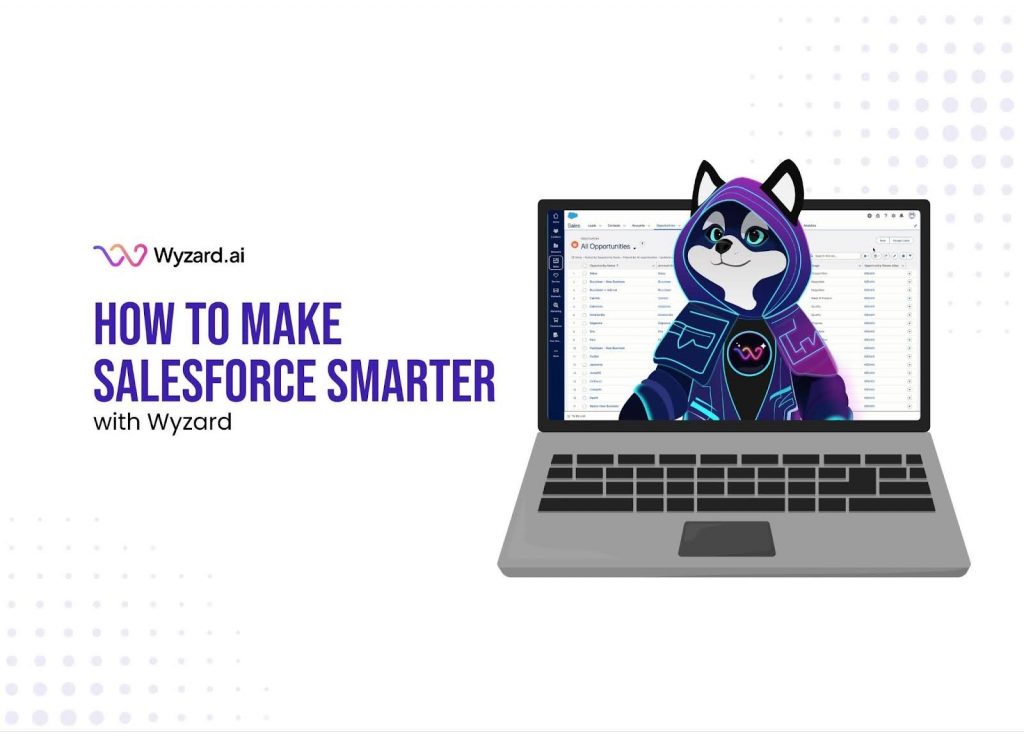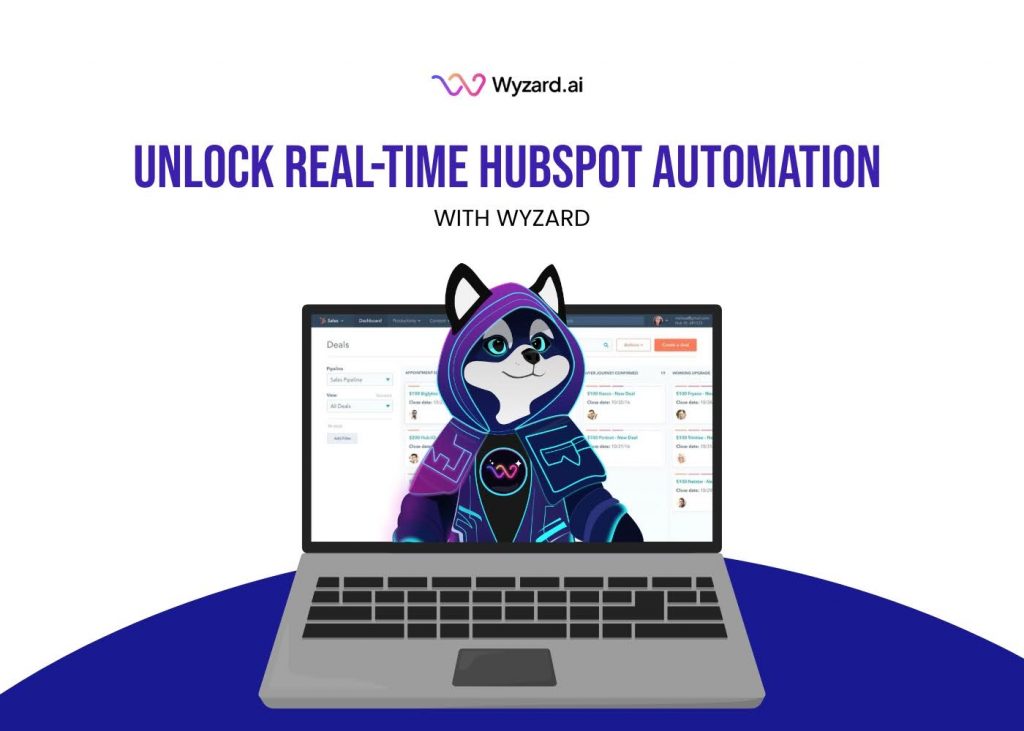You're generating traffic. Leads are visiting your website. But conversions? They're barely moving the needle. The problem isn't your ...
Top Lead Nurturing Strategies for B2B Growth (with Agentic AI Examples)


Subscribe Now
In today’s competitive B2B landscape, generating leads is only half the battle. The real challenge lies in how to nurture b2b leads effectively to drive sustainable growth. Modern lead nurturing b2b strategies now integrate artificial intelligence to create more personalized, timely, and effective touchpoints throughout the customer journey. This comprehensive guide explores proven lead nurturing techniques enhanced by agentic AI capabilities that can transform your marketing funnel performance.
How to Nurture B2B Leads: Understanding the Foundation
What is Lead Nurturing?
Lead nurturing is the strategic process of developing relationships with potential customers at every stage of the sales funnel. Unlike traditional sales approaches, effective b2b lead nurturing focuses on providing value, building trust, and guiding prospects through their buying journey with relevant, timely content and interactions.
For B2B SaaS companies, lead qualification becomes particularly crucial as it helps identify which prospects are most likely to convert into paying customers. This foundation allows marketing teams to allocate resources more effectively and create targeted nurturing campaigns.
The Importance of Lead Nurturing for B2B Success
B2B lead nurturing directly impacts pipeline velocity and conversion rates. Research from MarketingSherpa indicates that 79% of marketing leads never convert into sales, primarily due to lack of proper nurturing. This represents a significant missed opportunity for growth-stage companies.
Effective how to nurture leads strategies address several critical business challenges:
- Improved conversion rates: Companies with mature lead nurturing programs achieve 47% higher purchase values
- Enhanced customer lifetime value: Properly nurtured customers tend to make larger purchases and remain loyal longer
The stakes are particularly high for SaaS companies where customer acquisition costs continue to rise and competition intensifies across all market segments.
Essential B2B Lead Nurturing Strategies That Drive Growth
Personalized Communication through AI
Modern b2b lead enrichment relies heavily on AI-powered personalization that goes beyond basic demographic segmentation. Advanced AI systems analyze behavioral patterns, content engagement, and interaction history to create truly individualized experiences.
An ai marketing copilot can track micro-signals like page visit duration, content downloads, and email engagement patterns to determine prospect intent levels. This data enables marketing teams to deliver precisely timed, contextually relevant messages that resonate with specific prospect needs.
For example, if a prospect repeatedly visits pricing pages and downloads ROI calculators, the AI system can automatically trigger personalized communications focusing on implementation timelines and success metrics rather than generic product features.
Successful personalization also extends to communication channels and timing. AI algorithms can determine whether a prospect prefers email, chat, or phone interactions, and identify optimal engagement windows based on historical response patterns.
Utilizing AI for Predictive Lead Scoring
Predictive lead scoring transforms how to nurture b2b leads by identifying which prospects are most likely to convert and when they’re ready for sales engagement. Unlike traditional scoring models based on static criteria, AI-powered systems continuously learn from prospect behavior and outcome data.
Modern lead scoring incorporates multiple data sources, including:
- Website behavior and engagement patterns
- Email interaction rates and response timing
- Social media engagement and professional signals
- Firmographic data and technographic insights
- Historical conversion patterns from similar prospects
This comprehensive approach enables marketing teams to prioritize outreach efforts and customize nurturing sequences based on propensity to purchase. High-scoring leads receive more intensive, sales-focused communications, while lower-scoring prospects enter longer-term educational nurturing tracks.
The key advantage lies in dynamic scoring that adjusts in real-time as prospects take new actions or change behavior patterns, ensuring nurturing strategies remain aligned with current intent levels.
Multi-Channel Engagement Techniques
Effective lead nurturing b2b strategies orchestrate touchpoints across multiple channels to maintain consistent prospect engagement. Research shows that companies using multi-channel nurturing campaigns achieve 24% faster revenue growth compared to single-channel approaches.
A comprehensive multi-channel strategy typically includes:
- Email sequences: Automated drip campaigns delivering educational content, case studies, and product information
- Website personalization: Dynamic content that adapts based on prospect profile and behavior history
- Social media engagement: Targeted content sharing and community building on professional platforms
- Direct mail integration: Physical touchpoints for high-value prospects or key decision-makers
- Webinars and events: Interactive educational experiences that build relationships and demonstrate expertise
The challenge lies in maintaining message consistency while adapting content format and tone for each channel. Successful campaigns create cohesive experiences where prospects receive complementary information regardless of their preferred engagement method.
AI Marketing Copilot Tools for Enhanced Lead Nurturing
AI-Powered Email Marketing Automation
Email remains the cornerstone of most b2b lead nurturing programs, with AI enhancing both personalization and timing optimization. Advanced email automation platforms now use machine learning to determine optimal send times, subject line variations, and content recommendations for individual prospects.
AI-powered email marketing goes beyond traditional demographic segmentation to create behavior-based messaging. The system analyzes factors like:
- Historical email engagement patterns and preferences
- Website browsing behavior and content consumption
- Sales interaction history and feedback
- Industry trends and seasonal buying patterns
This intelligence enables marketers to create highly targeted email sequences that feel personal and relevant rather than generic and promotional. For instance, prospects showing high engagement with technical content might receive detailed implementation guides, while those focused on business outcomes get ROI-focused case studies.
Modern platforms also incorporate natural language processing to optimize email copy and subject lines automatically, testing variations and learning from response patterns to improve future communications.
Chatbots for Real-Time Engagement
Real-time engagement through AI-powered chatbots has become essential for capturing and nurturing high-intent prospects. Studies indicate that lead response time significantly impacts conversion rates, with companies responding within five minutes being 100 times more likely to connect with prospects.
Modern chatbots go beyond simple FAQ responses to provide sophisticated lead-nurturing capabilities:
- Intent recognition: Understanding prospect needs and routing conversations appropriately
- Personalized recommendations: Suggesting relevant content, resources, or next steps based on profile data
- Qualification automation: Gathering key information without feeling invasive or robotic
- Meeting scheduling: Seamlessly connecting qualified prospects with sales representatives
- Follow-up coordination: Ensuring no prospect falls through engagement gaps
Platforms like Wyzard.ai excel at creating conversational experiences that feel natural while capturing valuable prospect insights. These systems learn from each interaction to improve future conversations and identify patterns that indicate buying readiness.
The key advantage lies in 24/7 availability and instant response capabilities that meet modern buyer expectations for immediate engagement and information access.
Integrating AI with CRM for Better Management
Successful how to nurture leads programs require seamless integration between AI tools and customer relationship management systems. This integration ensures prospect data flows smoothly between marketing automation, sales tools, and customer success platforms.
Advanced CRM integration enables several critical capabilities:
- Unified prospect profiles: Combining behavioral data, interaction history, and preference information in single views
- Automated task creation: Triggering appropriate follow-up actions based on prospect behavior or engagement levels
- Pipeline visibility: Providing real-time insights into nurturing campaign effectiveness and conversion rates
- Attribution tracking: Understanding which touchpoints and content pieces drive prospect progression
- Personalization at scale: Using CRM data to customize experiences across all prospect touchpoints
The integration also supports better sales and marketing alignment by ensuring both teams have access to complete prospect context and engagement history. This visibility enables more informed conversations and smoother handoff processes between marketing-qualified and sales-qualified leads.
B2B Lead Enrichment (Measuring Your Nurturing Success)
Key Metrics to Track
Effective b2b lead enrichment requires consistent measurement and optimization based on performance data. Successful nurturing programs track both leading and lagging indicators to understand campaign effectiveness and identify improvement opportunities.
Essential metrics for lead nurturing b2b programs include:
- Email engagement rates: Open rates, click-through rates, and response rates across nurturing sequences
- Content consumption patterns: Which assets generate the highest engagement and progression rates
- Lead progression velocity: Time required for prospects to move between funnel stages
- Marketing-qualified lead conversion: Percentage of nurtured leads meeting sales-ready criteria
- Customer acquisition cost: Total nurturing investment required to generate new customers
- Revenue attribution: Direct correlation between nurturing activities and closed deals
Advanced analytics also examine behavioral indicators like website session duration, page depth, and return visit frequency to understand prospect engagement quality beyond surface-level metrics.
Adjusting Strategies Based on Data Insights
Continuous optimization distinguishes successful lead nurturing programs from those that plateau or decline over time. Data-driven adjustments should occur regularly based on performance trends and prospect feedback.
Key optimization areas include:
- Content performance analysis: Identifying which assets drive the highest engagement and conversion rates
- Channel effectiveness review: Understanding which touchpoints generate best results for different prospect segments
- Timing optimization: Adjusting send frequencies and schedules based on response patterns
- Segmentation refinement: Creating more targeted prospect groups based on behavior and outcome data
- Personalization enhancement: Deepening customization levels based on available prospect intelligence
Successful optimization also requires testing new approaches and technologies. A/B testing different email subject lines, content formats, and call-to-action placements provides ongoing insights for improvement.
Regular strategy reviews should examine both quantitative performance data and qualitative feedback from sales teams and prospects to ensure nurturing programs remain aligned with market needs and buyer preferences.
How to Nurture Leads While Overcoming Common Challenges
Addressing Data Privacy Concerns
Modern lead nurturing must balance personalization with privacy compliance, particularly as regulations like GDPR and CCPA reshape data collection and usage requirements. Successful programs build trust through transparency and responsible data practices.
Key privacy considerations include:
- Clearly communicating how prospect data will be used and obtaining appropriate permissions
- Collecting only information necessary for effective nurturing and prospect service
- Implementing robust protection measures for prospect information storage and transmission
- Providing easy methods for prospects to control their engagement preferences
- Regular audits to ensure nurturing practices meet current regulatory requirements
Transparent data practices can actually enhance nurturing effectiveness by building prospect trust and encouraging more open engagement with marketing communications.
Ensuring Consistent Messaging Across Channels
Maintaining message consistency while adapting content for different channels and prospect segments presents ongoing challenges for marketing teams. Successful programs establish clear brand guidelines and content frameworks that ensure cohesive experiences.
Effective coordination strategies include:
- Planning messaging themes and timing across all channels and campaigns
- Establishing consistent tone and personality for all prospect communications
- Centralized repositories ensuring teams use current, approved content versions
- Processes that coordinate timing and messaging between different touchpoint owners
- Ongoing collaboration between email, content, social, and sales teams
Tools like Wyzard.ai help maintain consistency by providing centralized conversation management and brand voice training for AI-powered interactions.
The conversation-first funnel approach has proven particularly effective for ensuring consistent messaging while maintaining personalization across multiple touchpoints and team interactions.
Lead Nurturing B2B: The Future with Agentic AI
The evolution toward agentic AI represents a fundamental shift in how to nurture b2b leads effectively. Unlike traditional automation that follows predetermined rules, agentic AI systems make autonomous decisions based on real-time prospect behavior and contextual understanding.
Future nurturing capabilities will include:
- AI agents that conduct natural, goal-oriented conversations without human intervention
- Systems that generate personalized assets based on individual prospect needs and preferences
- Real-time adjustment of nurturing sequences based on prospect responses and market conditions
- Seamless coordination of prospect experiences across all digital and offline touchpoints
- Advanced modeling that forecasts conversion probability and optimal engagement strategies
Final Thoughts on Implementing Lead Nurturing Strategies
Successful b2b lead nurturing requires combining proven strategies with emerging AI capabilities to create scalable, personalized experiences that drive growth. The most effective programs focus on understanding prospect needs, delivering consistent value, and using technology to enhance rather than replace human relationships.
As AI marketing copilot tools become more sophisticated, the competitive advantage will belong to companies that thoughtfully integrate these capabilities with strong foundational nurturing principles. The future of lead nurturing lies not in choosing between human touch and AI efficiency, but in combining both approaches to create exceptional prospect experiences that drive sustainable business growth.
FAQs
Traditional lead nurturing relies on static rules and basic demographic segmentation to send predetermined email sequences or content. AI-powered lead nurturing uses machine learning to analyze behavioral patterns, engagement history, and real-time prospect actions to deliver personalized experiences.
AI-powered predictive lead scoring is the most effective method for determining sales-readiness. Modern systems analyze multiple data sources, including website behavior, email engagement, social media activity, and firmographic data to assign dynamic scores that update in real-time. High-scoring leads showing behaviors like repeated pricing page visits, ROI calculator downloads, and increased email engagement should be prioritized for sales outreach, while lower-scoring prospects benefit from continued educational nurturing sequences.
A comprehensive multi-channel strategy should include email sequences (the cornerstone), website personalization, social media engagement, and real-time chat capabilities. The key is maintaining consistent messaging across all channels while adapting content format for each platform. AI-powered chatbots are particularly important for real-time engagement, as companies responding within five minutes are 100 times more likely to connect with prospects.
Privacy compliance requires transparent consent management, data minimization, and robust security protocols. Collect only the information necessary for effective nurturing, clearly communicate how prospect data will be used, and provide easy opt-out processes. Rather than hindering nurturing effectiveness, transparent data practices actually build prospect trust and encourage more open engagement. Regular compliance audits and secure data storage/transmission protocols are essential components of any AI-powered nurturing program.
Track email engagement rates, content consumption patterns, lead progression velocity, marketing-qualified lead conversion rates, and customer acquisition costs. Also monitor behavioral indicators like website session duration and return visit frequency to understand prospect engagement quality. Continuously optimize through A/B testing of content, timing, and personalization while using both quantitative data and sales team feedback to refine strategies.
Other blogs
The latest industry news, interviews, technologies, and resources.
How to Make Salesforce Smarter with Wyzard.ai
Your CRM is packed with contacts, but how many buying signals are you missing right now? A prospect just ...

Unlock Real-Time HubSpot Automation with Wyzard.ai
Your HubSpot portal holds valuable data about every lead, deal, and customer interaction. But if you're waiting hours, or ...

 We’ve secured funding to power Signal-to-Revenue AI to GTM teams globally. →
We’ve secured funding to power Signal-to-Revenue AI to GTM teams globally. →


